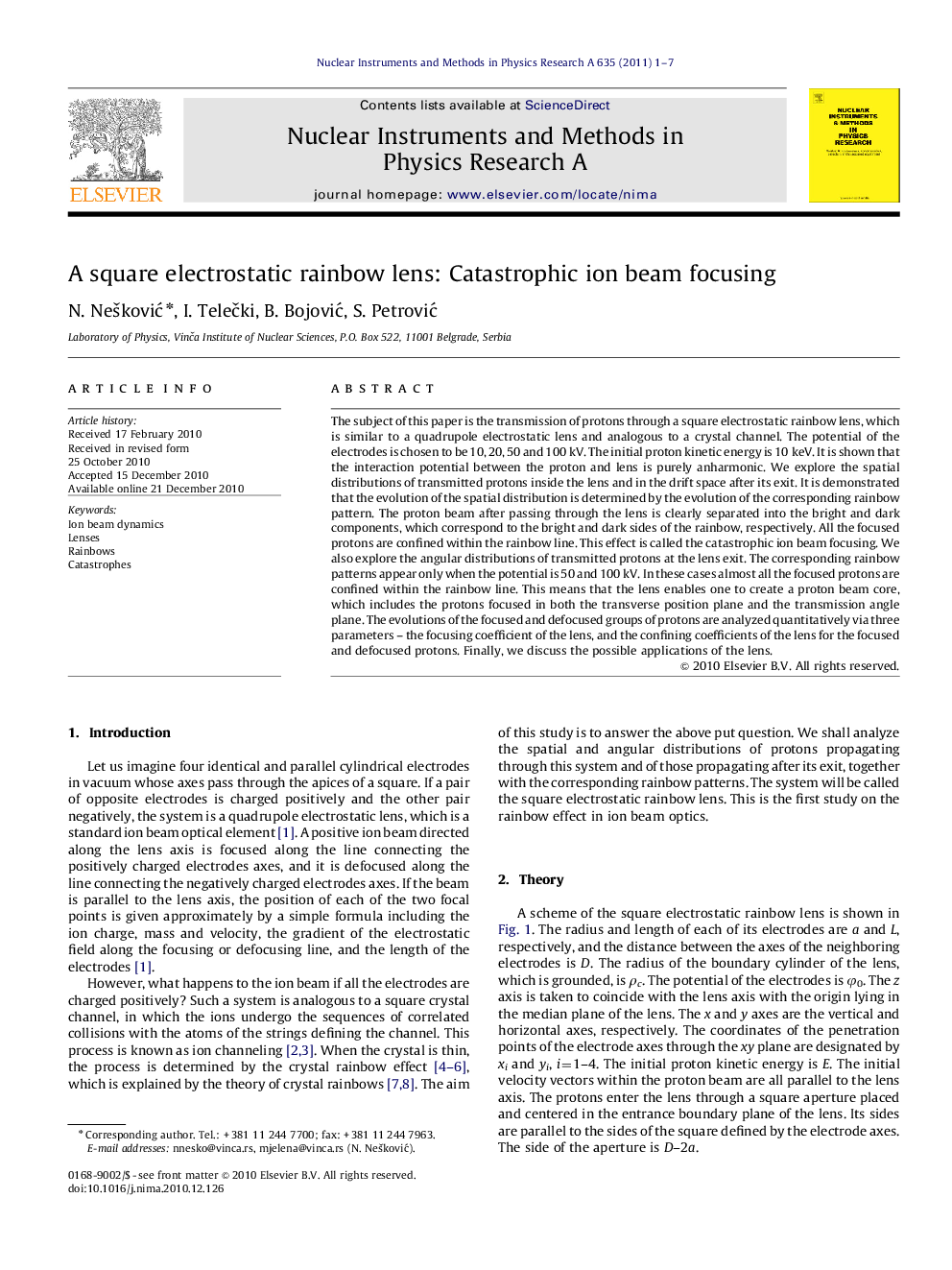| Article ID | Journal | Published Year | Pages | File Type |
|---|---|---|---|---|
| 1825435 | Nuclear Instruments and Methods in Physics Research Section A: Accelerators, Spectrometers, Detectors and Associated Equipment | 2011 | 7 Pages |
Abstract
The subject of this paper is the transmission of protons through a square electrostatic rainbow lens, which is similar to a quadrupole electrostatic lens and analogous to a crystal channel. The potential of the electrodes is chosen to be 10, 20, 50 and 100Â kV. The initial proton kinetic energy is 10Â keV. It is shown that the interaction potential between the proton and lens is purely anharmonic. We explore the spatial distributions of transmitted protons inside the lens and in the drift space after its exit. It is demonstrated that the evolution of the spatial distribution is determined by the evolution of the corresponding rainbow pattern. The proton beam after passing through the lens is clearly separated into the bright and dark components, which correspond to the bright and dark sides of the rainbow, respectively. All the focused protons are confined within the rainbow line. This effect is called the catastrophic ion beam focusing. We also explore the angular distributions of transmitted protons at the lens exit. The corresponding rainbow patterns appear only when the potential is 50 and 100Â kV. In these cases almost all the focused protons are confined within the rainbow line. This means that the lens enables one to create a proton beam core, which includes the protons focused in both the transverse position plane and the transmission angle plane. The evolutions of the focused and defocused groups of protons are analyzed quantitatively via three parameters - the focusing coefficient of the lens, and the confining coefficients of the lens for the focused and defocused protons. Finally, we discuss the possible applications of the lens.
Related Topics
Physical Sciences and Engineering
Physics and Astronomy
Instrumentation
Authors
N. NeÅ¡koviÄ, I. TeleÄki, B. BojoviÄ, S. PetroviÄ,
